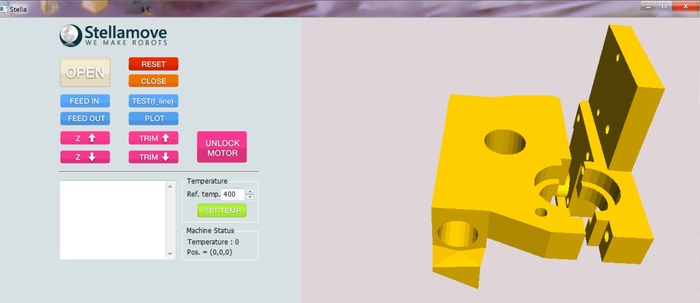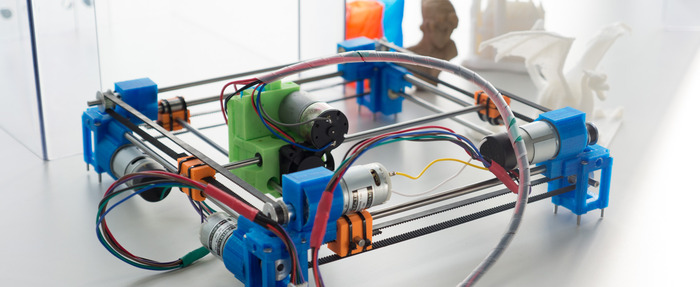In the magical — or rather, technical — world of makers and 3D printing everyone can use his or her own expertise to improve on the design, functionality and inner workings of the machines. So if you are a designer you might work on how it looks, as an expert in 3D printing technologies you might try to bring complex techniques to a wider audience. As an engineer you would work on how the machine works: specifically on how its engines function. And if you are a robotics engineer you would work on how software and electronics can make those engines, that is the motors, work better.
That is the idea behind RAPPY (Rapid Advanced Precision Printing sYstem), a Kickstarter project by Stellamove Inc. for a low-cost-high-resolution machine that uses a new, sophisticated position feedback system to control its brushed DC motors.
According to the project’s creators, a team of software, manufacturing and robotics experts, it is possible to drastically cut costs, size and weight, while increasing energy efficiency, by using brushed DC motors instead of the brushless DC (BLDC) stepper motors used in most FDM/FFF 3D printers. In fact, according to Dynetic Systems, BLDC motors have higher costs of construction, require more expensive controls and need and an electric controller to keep on running.
On the other hand there is a reason why brushed DC motors are not used in all 3D printers and that is that they are much more difficult to control precisely. That is why Stellamove developed a particular software and embedded it into a simple hardware that is able to give the machine superior accuracy and 100 micron resolution, while keeping costs down. Furthermore, the control system will enable the machine to resist extreme external shocks without ever interrupting the printing process (see the video below, it is quite impressive).
Its position feedback control system consists of thousands of software code lines written into the RAPPY PUMP DC motor control board. The machine works with its own PUMP Builder software, which in turn is compatible with both .stl and .gcode files. This software and hardware based control system will allow RAPPY to resist against external shocks as well as internal complications caused by build errors. That means the machine will be able to run for many hours reducing the chance of error.
If the $100,000 KS campaign goal is achieved (currently fund raising stands at $13,327 with 24 days left), the system will ship in July, fully assembled, for $699 plus tax (and $110 for shipping to the US) to the first backers. Other advantages include automatic leveling of the extruder, the possibility of using it for 2D plotting, and a smart, magnetic bed plate. Still, if Stellamove’s promise will be fulfilled, its greatest advantage will be a drastic reduction in the ticket to enter the magical – or rather, technical – world of 3D printing.





